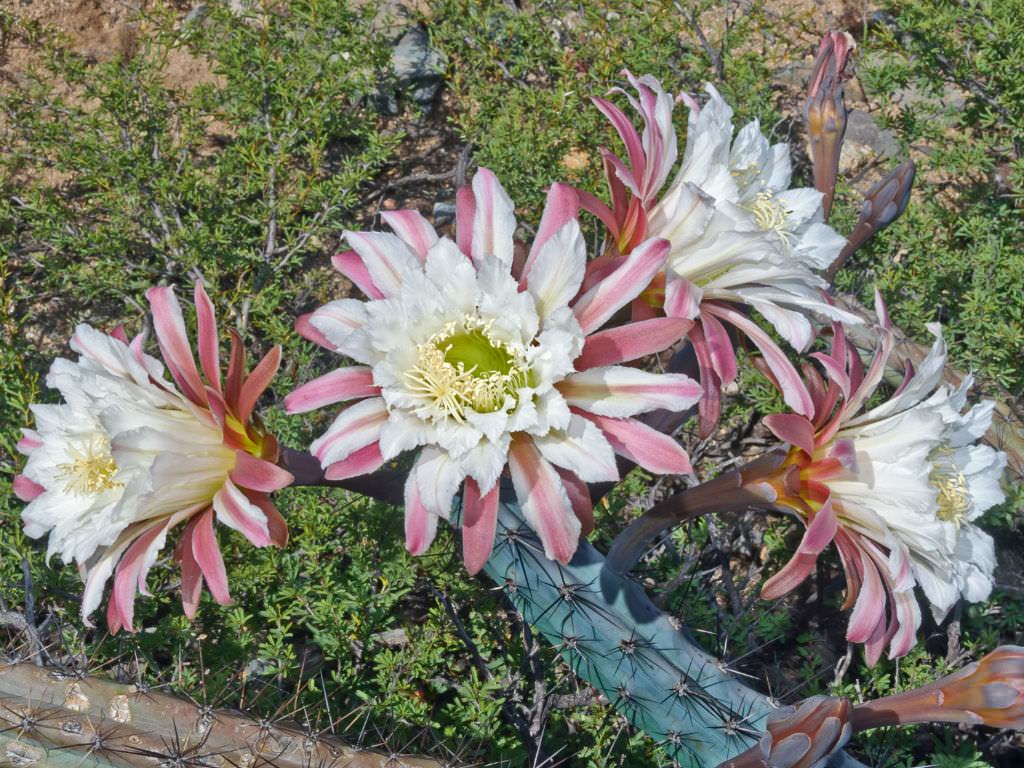Cereus Aethiops
The cereus aethiops is a fascinating plant that has become increasingly popular among succulent enthusiasts. This plant is known for its unique shape and exotic appearance, making it a great addition to any home garden. In this article, we will discuss the benefits, care, and maintenance of the cereus aethiops.
Pain Points Related to Cereus Aethiops
Many people are attracted to the cereus aethiops because of its distinctive features, such as its branches that look like tree branches and its tart apple scent. However, this plant requires a lot of attention and care to thrive, which can be a daunting task for some. Additionally, the cereus aethiops can be sensitive to changes in temperature and soil moisture, which can lead to wilting or root rot.
Answering the Target of Cereus Aethiops
The cereus aethiops is a species of cactus that is native to South America. This plant is loved by many for its unique appearance, which features long, cylindrical stems that branch out with age. The cereus aethiops is a slow-growing cactus, but it can live for many years with proper care and maintenance.
Summary of the Main Points
Caring for cereus aethiops requires attention to detail. This plant is sensitive to changes in temperature and soil moisture, and it requires regular fertilization to thrive. Additionally, pruning is necessary to keep the plant's branches from becoming too heavy. Overall, the cereus aethiops is a beautiful and unique plant that can be a great addition to any home garden.
The Target of Cereus Aethiops
When it comes to caring for cereus aethiops, it is important to understand the plant's needs and preferences. This plant thrives in well-draining soil that is slightly acidic, and it requires regular watering during the growing season. Additionally, fertilization should be done every two weeks during the growing season to ensure optimal growth.
Personally, I have found that placing my cereus aethiops in a bright, well-lit area that receives plenty of indirect sunlight has helped it to grow and thrive. Additionally, I make sure to prune the plant regularly to keep its branches from becoming too heavy and causing damage.
Care and Maintenance of Cereus Aethiops
When it comes to caring for cereus aethiops, there are several key factors to keep in mind. First, this plant requires well-draining soil that is slightly acidic. Additionally, it prefers a warm, humid environment with plenty of indirect sunlight. Watering should be done regularly during the growing season, but the soil should be allowed to dry out slightly between waterings to avoid root rot.
Fertilization is important for the growth and maintenance of cereus aethiops. During the growing season, fertilizer should be applied every two weeks to ensure optimal growth. Pruning is also necessary to keep the plant looking its best and to prevent its branches from becoming too heavy and causing damage.
Growing Cereus Aethiops From Cuttings
One way to propagate cereus aethiops is by taking stem cuttings. To do this, take a cutting of a stem that is at least six inches long and let it dry out for a few days. Once it has dried out, place it in well-draining soil, and keep it moist until it begins to root. It will usually take several weeks for the cutting to fully root, but once it does, it can be treated like any other cereus aethiops plant.
Caring for Cereus Aethiops Indoors
If you are growing cereus aethiops indoors, it is important to make sure that it receives plenty of indirect sunlight. Placing it near a south-facing window or under a grow light can help it to thrive. Additionally, make sure to water the plant regularly and fertilize it every two weeks during the growing season.
Question and Answer
Q: How often should I water my cereus aethiops?
A: During the growing season, watering should be done regularly, but the soil should be allowed to dry out slightly between waterings to avoid root rot. In the winter, watering should be reduced to once a month to prevent over-watering.
Q: Why is my cereus aethiops turning yellow?
A: Yellowing of the leaves or stems can be a sign that the plant is not receiving enough sunlight, or that it is being over-watered. Try moving it to a brighter location or adjusting your watering schedule to see if this helps.
Q: What kind of fertilizer should I use for my cereus aethiops?
A: A balanced, water-soluble fertilizer is best for cereus aethiops. During the growing season, apply fertilizer every two weeks to ensure optimal growth.
Q: Can I grow cereus aethiops outdoors?
A: Yes, cereus aethiops can be grown outdoors in warm, humid climates. It prefers well-draining soil and indirect sunlight, and should be watered regularly during the growing season.
Conclusion of Cereus Aethiops
In conclusion, the cereus aethiops is a unique and beautiful plant that can be a great addition to any home garden. While it can be sensitive to changes in temperature and soil moisture, with proper care and maintenance, it can thrive for many years. Whether grown indoors or outdoors, this plant is sure to add a touch of exotic beauty to your home.
Gallery
Cereus Aethiops Care | Travaldo's Blog

Photo Credit by: bing.com / cereus aethiops care some
Cereus Aethiops - World Of Succulents

Photo Credit by: bing.com / cereus aethiops succulents worldofsucculents giorgetta
Cereus Aethiops Care | Travaldo's Blog

Photo Credit by: bing.com / aethiops cereus care some
Cereus Hexagonus – THE LAST CACTUS CLASSIFICATION

Photo Credit by: bing.com / cereus aethiops albicaulis hexagonus giorgetta
Cereus Aethiops - World Of Succulents

Photo Credit by: bing.com / cereus aethiops cacti shrub giorgetta